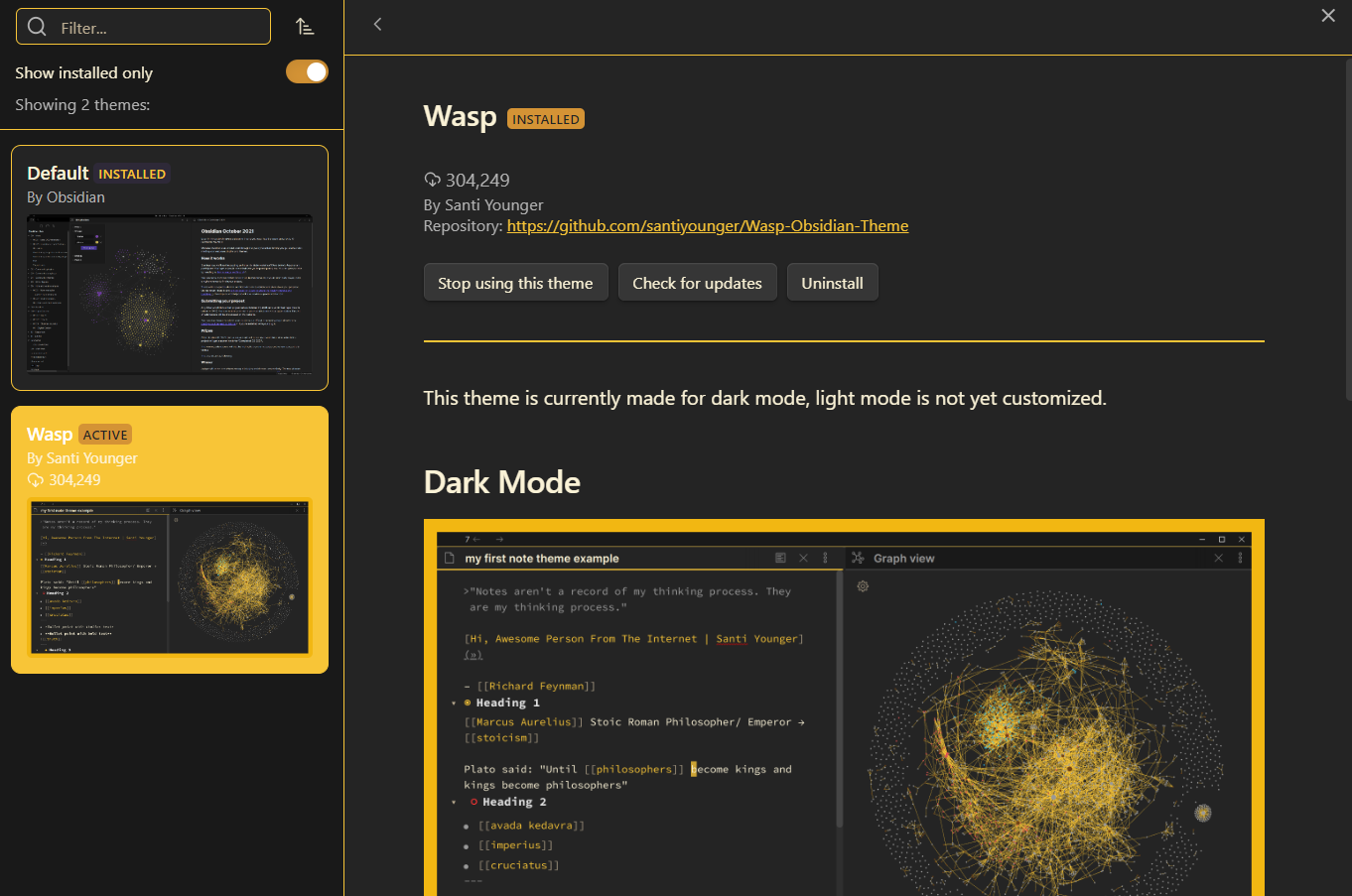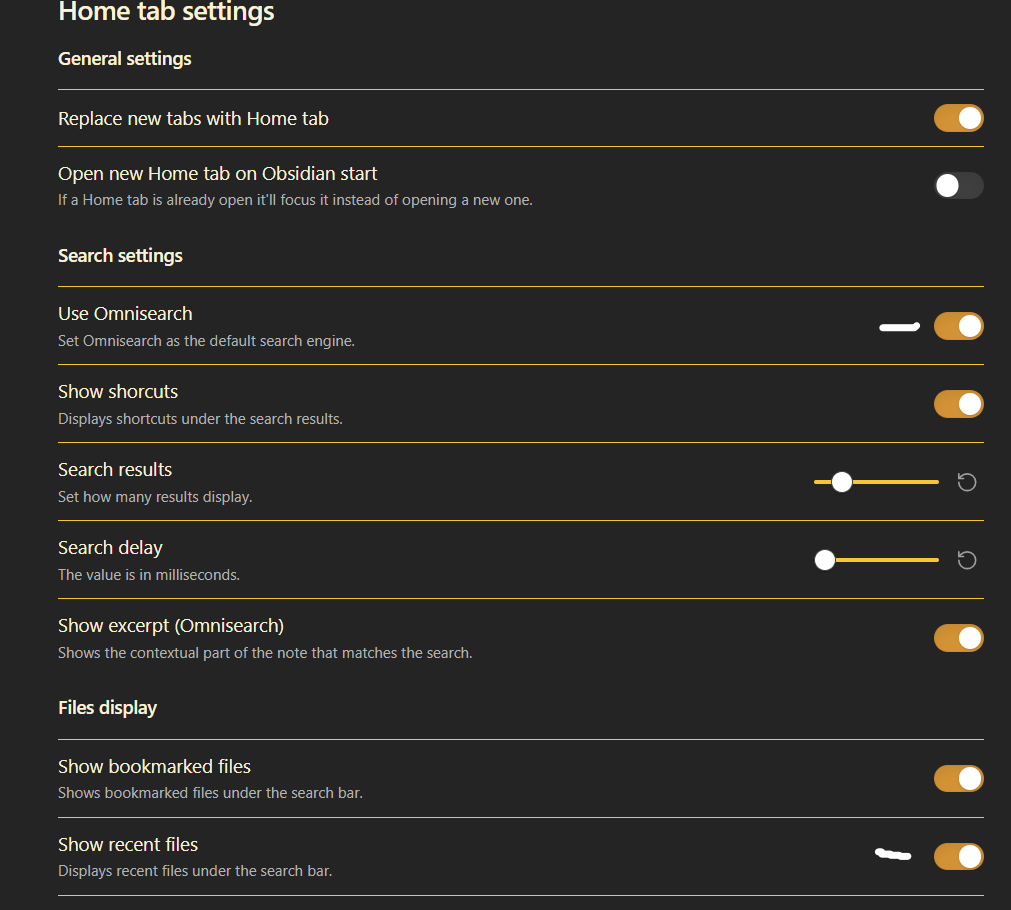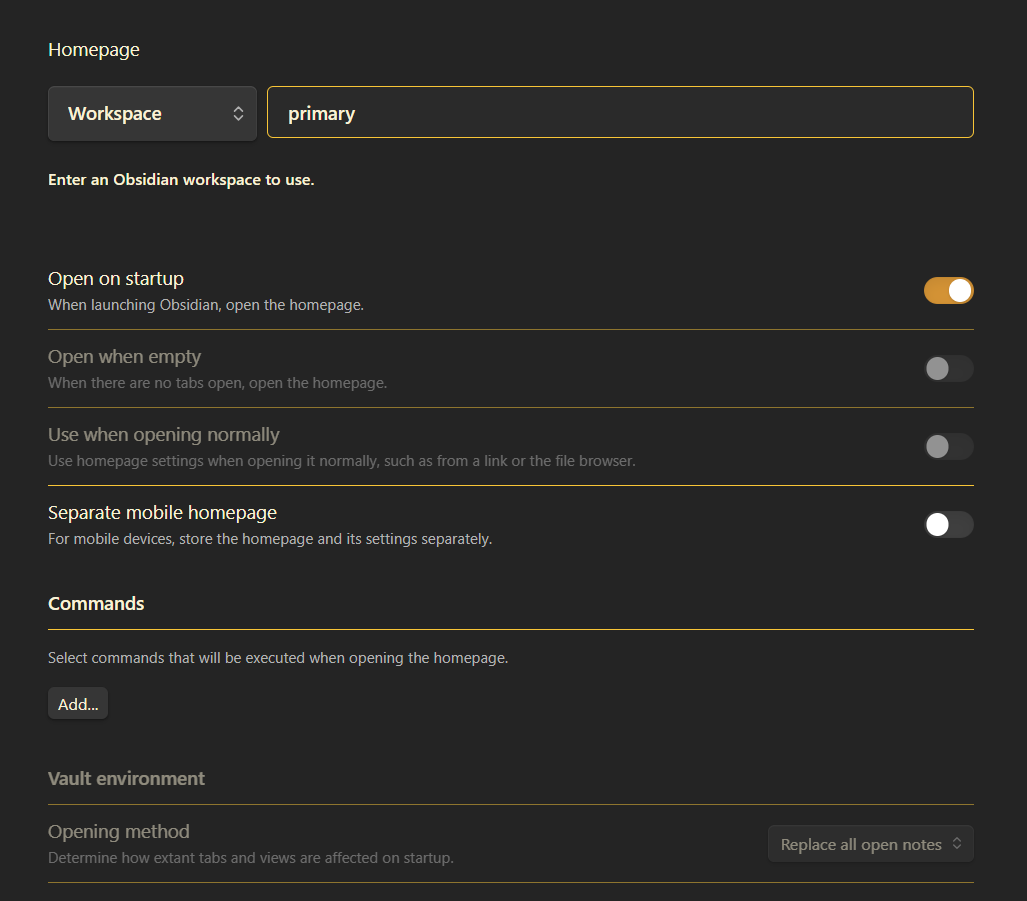Custom Obsidian Setup: Hometab Images, Search, Radar, and Workspaces
This guide explains how to configure your Obsidian setup with embedded images, searchable hometabs, radar charts, and a default workspace. It requires some core and community plugins, and code snippets.
Table of Contents
- Themes and Plugins
- Embedding Images in Hometab
- Adding a Search Menu to Hometab
- Implementing a Radar Chart
- Setting a Default Workspace on Startup
Themes and Plugins
Theme in use
- Wasp Theme

Core Plugins
- workspaces
Community Plugins
- Required:
- Banner (for custom image banners)
- Charts View
- Dataview
- Hometab
- Homepage
-
Omnisearch
Embedding Images in Hometab
Adding images to Hometab is done with a CSS snippet.
Steps:
- Install and enable the Hometab plugin.
- Navigate to your vault’s
.obsidian/snippetsfolder. - Create a CSS snippet that includes a
.hometabselector.(or copy the basic snippet from below) - Convert your image to Base64 to avoid path conflicts.

- Include your Base64 file inside the snippet. This is one resource for conversion Base64 convertor site
/*Banner for HomeTab plugin */
.home-tab::before {
content: "";
display: block;
width: 100%;
height: 320px;
background-image:
linear-gradient(to bottom, rgba(0, 0, 0, 0) 70%, var(--background-primary) 100%),
url(data:) /*insert base64 image here*/
background-size: cover;
background-position: center;
border-radius: var(--input-radius);
box-shadow: 0 4px 12px rgba(0, 0, 0, 0.2);
margin-bottom: 0; /* no extra gap */
z-index: 0;
}
/* Ensure the container fills the view */
.home-tab {
position: relative;
height: 100%;
min-height: 100vh;
overflow: hidden;
}
Activate the snippet in Obsidian appearance settings and configure text/display options in the Hometab plugin settings.

Adding a Search Menu to Hometab
Search functionality can be added using Omnisearch.
Steps:
Install and enable Omnisearch.
Open Hometab plugin settings.
Enable Use Omnisearch.
Optionally, enable Recent Files.

Implementing a Radar Chart
Radar charts can be implemented to help visualize tag usage or focus areas across notes.
Steps:
Install and enable Dataview and Charts View.
In Dataview settings, enable all options.
Create a note and paste your radar chart snippet:
Dataview Radar Code Snippet
Copy this into your note inside a dataviewjs code block e.g(dataviewjs ...):
// === Fetch Tags & Counts Automatically ===
const tagMap = {};
dv.pages().forEach(p => {
if (p.file.tags) {
p.file.tags.forEach(tag => {
tagMap[tag] = (tagMap[tag] || 0) + 1;
});
}
});
const tagData = Object.entries(tagMap)
.map(([tag, count]) => ({
label: tag.replace(/^#/, ""), // Remove leading "#"
value: count
}))
.sort((a, b) => b.value - a.value); // Most frequent first
// Build YAML data lines
const chartYaml = tagData
.map(t => ` - label: "${t.label}"\n value: ${t.value}`)
.join("\n");
dv.paragraph(`
\`\`\`chartsview
type: Radar
data:
${chartYaml}
options:
xField: "label"
yField: "value"
seriesField: null
enableSearchInteraction: true # <-- enables clicking
areaStyle:
fill: "rgba(0,200,83,0.2)"
lineStyle:
stroke: "rgba(0,200,83,1)"
lineWidth: 2
point:
size: 4
style:
fill: "rgba(0,200,83,1)"
\`\`\`
`);
Customize according to your tracking needs.
Setting a Default Workspace on Startup
You can set a workspace to open automatically with your preferred layout.
Steps:
Enable Workspaces from core plugins.
Install and enable Homepage.
Customize your layout and pin notes if necessary.
Go to workspace settings:
Save your workspace layout.
Enable Open on Default.
